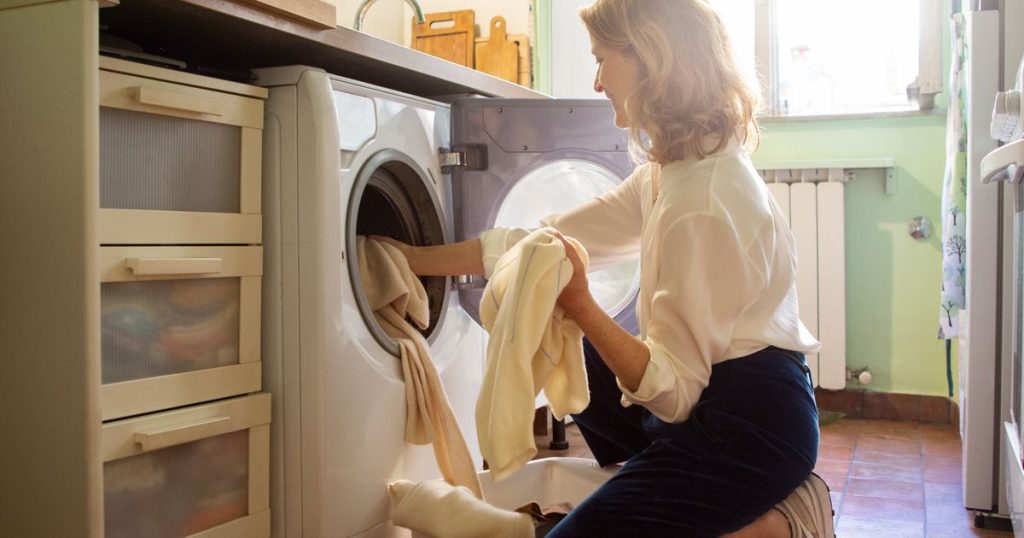Appliances are often the unsung heroes of our homes, working tirelessly behind the scenes to keep our lives clean, comfortable, and convenient. However, these essential machines often go unnoticed when it comes to cleaning. Out of sight, out of mind, right? But neglecting to clean your appliances can lead to a host of problems, from reduced performance and shorter lifespans to serious health and safety risks. Experts agree that keeping your appliances clean is just as important as keeping your floors and countertops spotless. Let’s dive into the often-overlooked appliances that need your attention, how often you should clean them, and why it’s crucial to add them to your cleaning routine.
The washing machine is a prime example of an appliance that needs regular maintenance. After all, it’s designed to clean your clothes, but who cleans the cleaner? Over time, bacteria, mold, and detergent residue can build up inside the machine, leading to unpleasant odors and even health risks. If your freshly washed clothes smell less than fresh, it could be a sign that your washing machine is harboring bacteria. According to microbiologist Jason Tetro, washing machines can become breeding grounds for harmful pathogens, including fecal and skin bacteria. This doesn’t just affect the machine—it can also contaminate your clean laundry. Cleaning your washing machine once a month is a good rule of thumb, though the frequency may vary depending on how often you use it and the type of detergent you prefer. To keep it clean, run a cycle with bleach or use the machine’s cleaning function, and don’t forget to wipe down the gasket and leave the door open to dry.
The dishwasher is another appliance that’s easy to overlook, but failing to clean it can have serious consequences. Over time, food particles and grease can clog the filter and create a smelly buildup that affects the machine’s performance. Worse still, mold and bacteria can thrive in the damp environment, contaminating your dishes and even the air in your home. “If the dishwasher isn’t cleaned, it becomes a source of contamination,” explains Michael Rubino, a mold and air quality expert. Cleaning your dishwasher once a month is a good idea, though heavy users may need to clean it more frequently. To deep clean, remove and wash all the removable parts, clean the filter according to the manual, and run a vinegar cycle. Don’t forget to wipe down the door and let it dry after each use.
Coffee makers are another commonly neglected appliance, but they’re especially prone to mineral buildup and mold growth. If you’ve ever noticed your coffee tasting off, it could be because of hard water minerals or mold spores lurking inside the machine. In fact, one study found that half of all coffee maker reservoirs contain mold or yeast. Cleaning your coffee maker regularly is essential to remove these contaminants and keep your coffee tasting its best. Experts recommend deep cleaning your coffee maker once a month using a descaling solution or equal parts water and white vinegar. After each use, wash the removable parts, like the water reservoir and carafe, and wipe down the machine’s surface with a botanical cleaner. A clean coffee maker not only makes better coffee but also helps prevent bacteria from ending up in your morning brew.
The dryer is another appliance that’s often overlooked, but failing to clean it can have dangerous consequences. Lint buildup in the filter and vents is a common issue, and it’s not just about efficiency—it’s a fire hazard. According to the U.S. Fire Administration, the leading cause of clothes dryer fires between 2018 and 2020 was the failure to clean them. Cleaning the lint filter after each use is a good start, but you should also pay attention to the filter compartment and the dryer vent, which should be cleaned at least once a year. To keep your dryer running safely and efficiently, use a lint vacuum or hire a professional to clean the vent. For the interior and exterior, wipe it down with a damp microfiber cloth and botanical cleaner, and don’t forget to clean under the door seal.
Finally, the microwave is one of the most used and abused appliances in the kitchen, but it’s also one of the most overlooked when it comes to cleaning. Food splatters and spills can quickly build up, creating bad odors and harboring mold and bacteria. Left unchecked, these particles can damage the microwave’s internal components and even catch fire when heated. The handle of the microwave is also one of the germiest places in the kitchen, making it a hotspot for germs. To clean your microwave, try this simple trick: mix lemon juice or white vinegar with water in a microwave-safe bowl, heat it for five minutes, then wipe down the interior with a damp cloth. For tougher messes, put the microwave plate and revolving ring in the dishwasher, and don’t forget to disinfect the handle with hydrogen peroxide or citric acid.
In the end, adding these appliances to your cleaning routine might take a little extra time, but the benefits are well worth the effort. Regular cleaning will not only extend the life of your appliances and prevent costly repairs, but it will also help protect your home and family from fire hazards, mold, bacteria, and other pathogens. By incorporating these simple cleaning habits into your routine, you’ll be creating a cleaner, safer, and healthier home for years to come.









